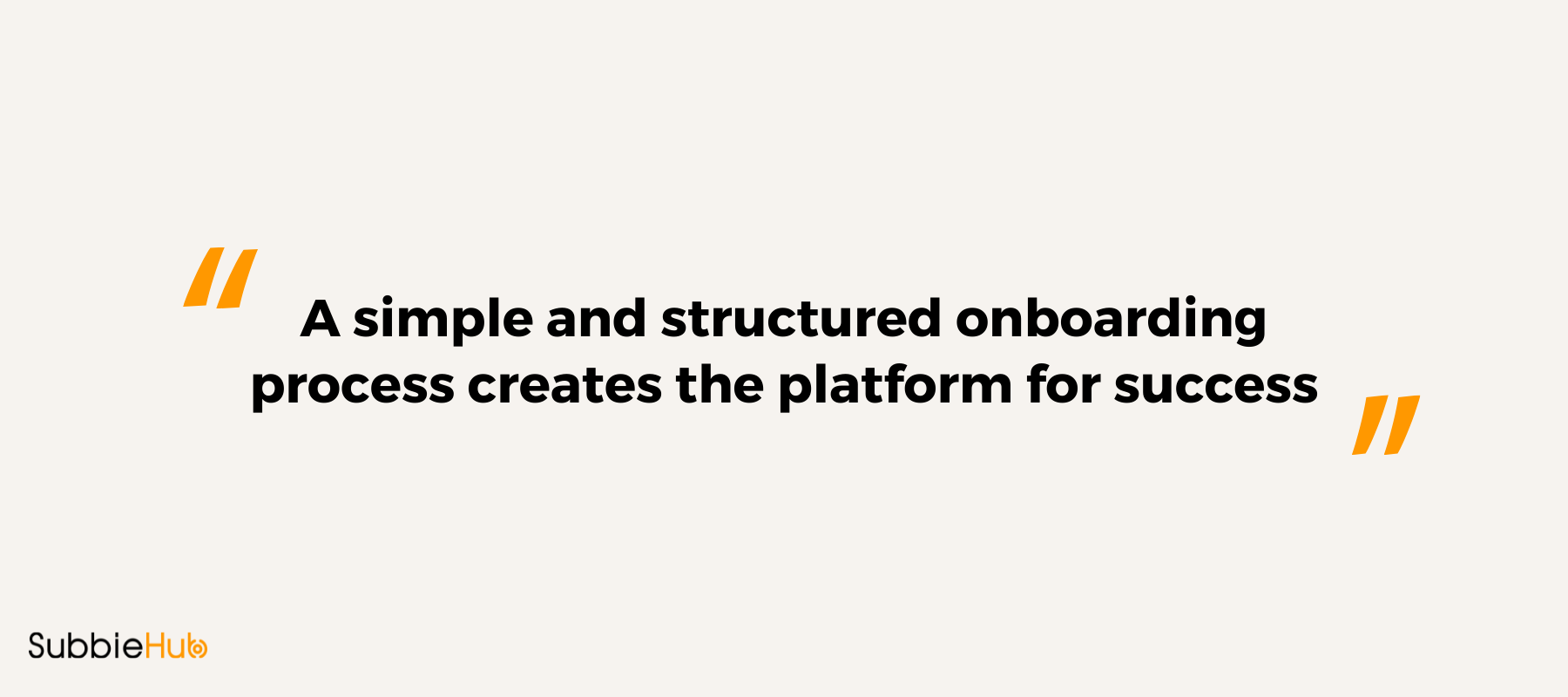If you have ever been in the position of hiring sub-contractors, you have probably already experienced the never-ending loop of ‘document chase’. The trouble is there are often valid and legitimate reasons why a sub-contractor can’t produce the documents, but how long do you allow it to go on for? The real frustration from onboarding subcontractors comes when you realise it isn’t a single one-off job that gets completed, but a continuous loop of follow-up and document verification that ends up needing a full-time admin person just to keep on top of it.
So how do you manage the process of onboarding subcontractors efficiently, to save you time and ultimately, that doesn’t require a full-time admin manager to solve? Stay tuned, that is precisely the question we are going to answer.
Why do I need contractors to go through an onboarding process?
In a nutshell, onboarding is about getting a subcontractor up to speed on the job and collecting the right documentation to set the project up for the best possible outcome. Some parts of onboarding are essential e.g., collecting insurance documents, others are more optional such as introducing the subcontractor to your team. The downside is that if you want your business to stay compliant, some level of onboarding is required, the upside is that if you do it right you will get better results from contractors, in a shorter space of time, while minimising your admin and creating a positive environment for all.
1. Reduce the time it takes for a contractor to hit peak performance
Whether a subcontractor is new to your company or just new to a job, the speed at which they can understand the what, how, when and where of the job that needs to get done, the quicker they can hit peak performance and deliver results, period.
By taking the contractor through a structured onboarding process, you get the opportunity to give the contractor all the tools and resources they need to complete the best job possible.
Imagine the difference between a contractor turning up on-site freshfaced with no idea where anything is to the contractor who already has detailed scopes, drawings, lay-outs, safety protocols etc. completed and uploaded to a mutually accessible database? The productivity gains are limitless.
2. Ensure all compliance requirements are met
The red tape is very real when you’re hiring subbies and there are certain documents that are simply essential if you want to stay on the right side of the law. Meeting your compliance obligations typically requires a long list of documents that need to be collected, verified for accuracy, monitored for changes and managed efficiently.
The difference between a business that has no handle on the level of compliance for their contractors and one that is completely on the ball, is an efficient onboarding process. The trick to minimising the time it takes to meet these obligations is to leverage technology that takes away the leg work such as SubbieHub.
You can find out what sort of documents need to be collected to meet your compliance requirements in our article ‘What documents do I need from my contractors’.
3. Reduce the threat of issues arising during the job
Taking the time to give a subcontractor the heads-up on how your contract works, what the expectations are, what the quality standards etc. are means they will be far less likely to fail at meeting those requirements of the job. Having this in writing and delivered in an onboarding process with the consequences of poor performance will make it crystal clear what is required.
Having a documented process that fosters high performance is the best way to gain significant boosts to your job performance and productivity. Assumptions and miscommunications can be the death of any project and they are a threat that can be eliminated. The great news is that creating an onboarding process doesn’t need to be a daunting task. You can read about how to make a simple and efficient onboarding process here.

4. Manage safety to reduce the risk of incidents or accidents
Work, Health and Safety (WH&S) create a range of legal requirements and obligations on all parties involved in a working environment. You have a legal responsibility to manage the risks of the job and worksite and to communicate and interact with a subcontractor to ensure a safe working environment. Building safety management into your onboarding process will give you confidence that you’re meeting those obligations.
Using an onboarding process to communicate the safety standards and responsibilities involved in a job means that all team members receive a thorough and consistent message. Having an audit trail of the process is an essential ingredient to prove you are taking the necessary steps to effectively manage risks in the workplace.
5. Peace of mind that the job is in good hands
Having confidence in your contractors and team members to deliver great results is essential for you to be able to step away from micro-managing every detail of every job. Your onboarding process is the single biggest ingredient in making sure that a contractor has the relevant skills and qualifications, meets your standards, and is a good fit for you and your business.
At the end of the day, the performance of your subcontractors reflects on you, your brand, and the client’s overall satisfaction with the job. By completing an onboarding process and not cutting corners, you can be confident that you have hired a subcontractor that ticks all the boxes and that you have given them the best chance of delivering exceptional results.

